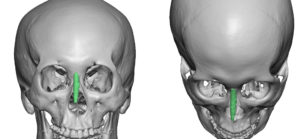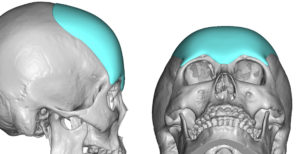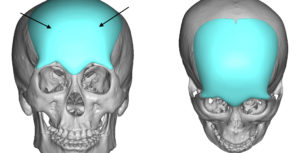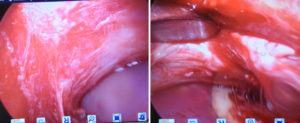Background: The forehead is responsible for a major part of the shape of the face. Its broad skin surface area can have a variety of shapes that exhibit well known gender differences. Contemporary desired forehead shapes in females are more vertical in inclination with a convex shape from side to side. Unlike most men who have a flatter forehead profile it is the rounder shape, with a central projection that is greater than the lateral temporal lines, than typically defines a female forehead.
In custom forehead implant designs creating its footprint (outline of the implant) and thickness is usually fairly straightforward. While there are always shape differences between men and women that is particularly reflected at its lower end at the brow bones, it is the shape above the brow bones that can be the hardest to get aesthetically correct. This requires evaluating different angles from below and above to really see how the implant is shaped in a 3D perspective.
One method I have found useful on the broad forehead surface in custom designing is to look for the ‘halo effect’. The halo effect is what one can see on the natural forehead or on an implant design from the front view that creates the transition from a flatter surface to a more convex one.



For the female who desires a flatter shape their custom forehead implant, using the halo effect is a useful design guide in creating that effect.
Highlights:
1) Forehead augmentation has many desired variations in shape and thicknesses amongst patients.
2) In custom forehead implants the hardest design feature is its external contour shape between the anterior temporal lines.
3) Asian females typically desire a vertical and more convex forehead shape while the patient in this study wanted a vertical but flatter forehead shape as seen in the design by the halo effect.
Dr. Barry Eppley
Indianapolis, Indiana





